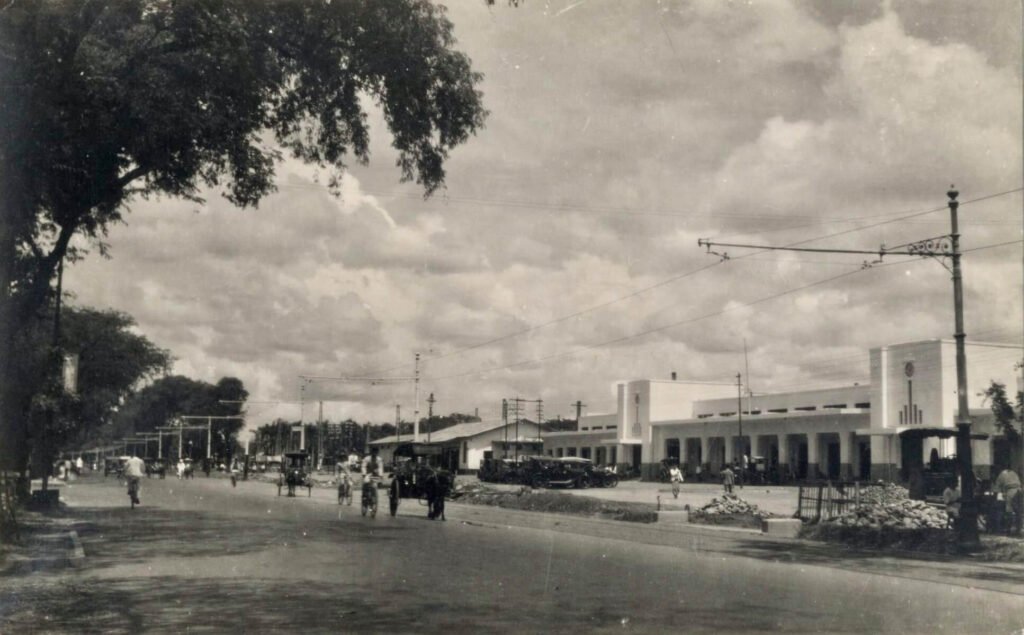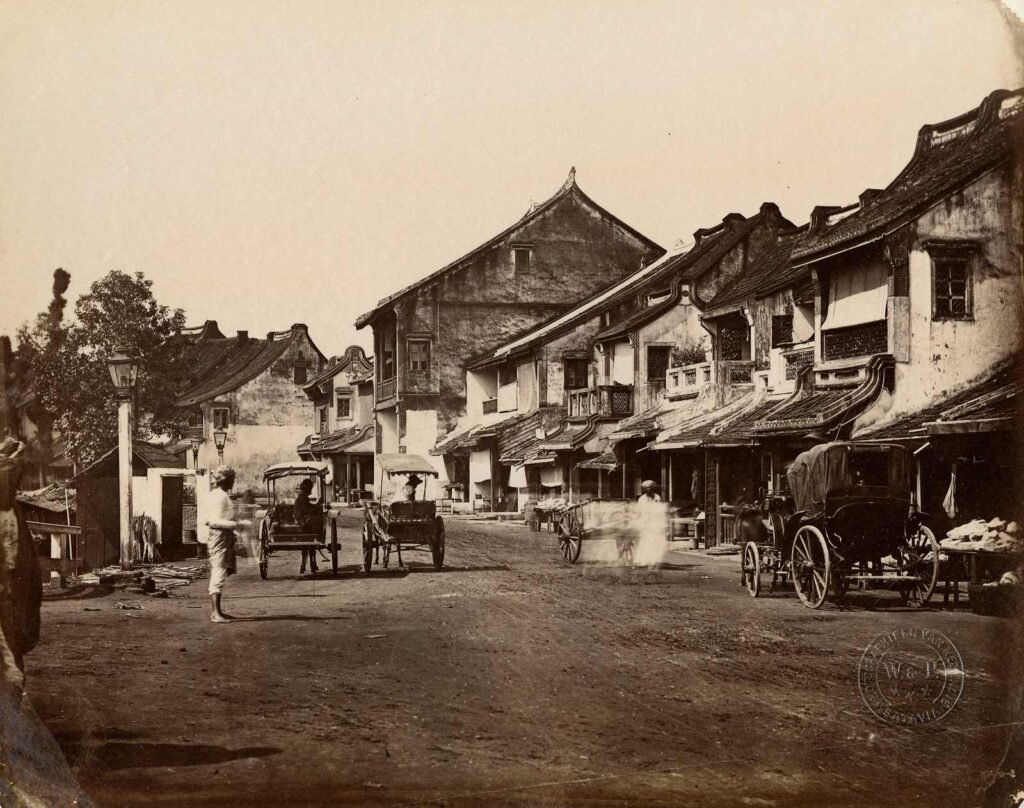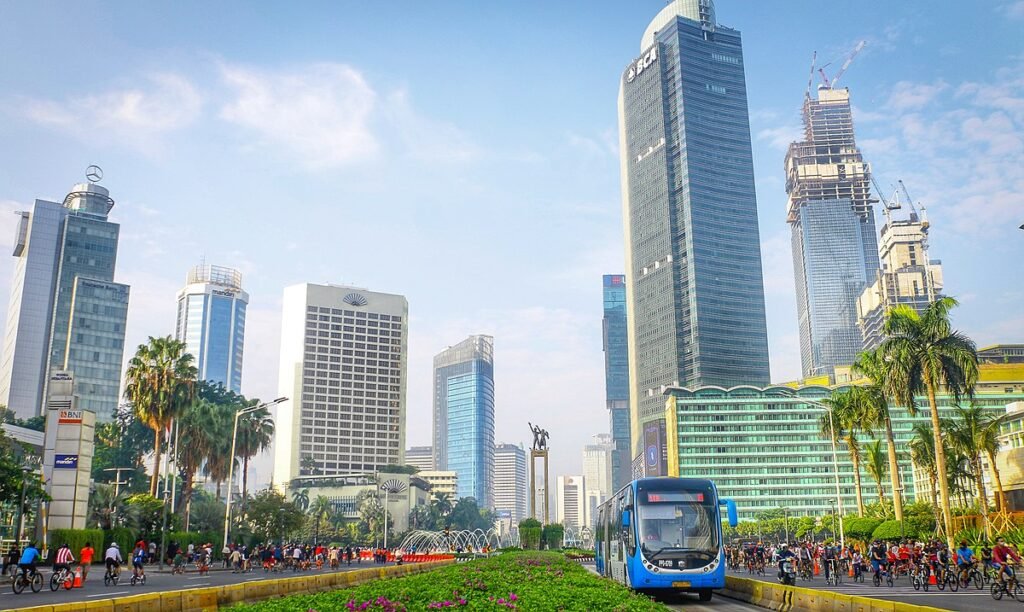Jakarta Then and Now
Jakarta Then
Jakarta, the capital and largest city of Indonesia, is strategically located on the northwest coast of Java, at the mouth of the Ciliwung River, along Jakarta Bay.
This geographic position has historically rendered it a vital hub for trade and cultural exchange, particularly due to its proximity to the Sunda Strait, which connects Java to Sumatra and the broader Asian continent, including India and China.
The city’s rich history can be traced back to the prehistoric Buni culture, known for its distinctive clay pottery and thriving from around 400 BC to 100 AD.
This cultural foundation set the stage for the development of the region, as evidenced by the earliest Sundanese records, the Sundapura, which highlight the area’s significance in the maritime trade networks of Southeast Asia.
Over the centuries, Jakarta has evolved from a coastal settlement into a bustling metropolis, encompassing Greater Jakarta and the special capital district of Jakarta, along with several offshore islands, reinforcing its role as a key economic and cultural center in the region.

Jakarta History
Jakarta’s history is rich and complex, beginning with its earliest settlements at the mouth of the Ciliwung River, potentially as early as the 5th century AD.
However, the city’s formal history commenced in 1527 when the Sultan of Bantam defeated the Portuguese, establishing the area as Jayakerta, meaning “Glorious Fortress” in Sundanese.
This marked a pivotal moment in the region’s history, transforming it into a significant trading hub.
Related Article: Guangzhou Then and Now
The subsequent capture of the city by the Dutch in 1619 led to the establishment of Batavia, the capital of the Dutch East Indies, reflecting the Dutch colonial ambition and altering the city’s landscape and cultural fabric.
The colonial era can be categorized into three major periods. Initially, under the Dutch East India Company, Batavia resembled a typical Dutch town with canals and warehouses focused around a fortress.
The second phase in the early 1800s saw the city’s expansion to healthier areas to the south, becoming the center for the colonial government.
Related Article: Shenzhen Then and Now
Although this period was briefly interrupted by British control during the Napoleonic Wars, it set the stage for further development.
The third period, from the 1920s to 1941, brought significant modernization to Jakarta, shaping its infrastructure and urban landscape.
The end of colonial rule was marked by the Japanese occupation during World War II, which significantly impacted the city’s dynamics.
Related Article: Beijing Then and Now
After the war, the Allies briefly occupied Jakarta before it was returned to the Dutch.
Following Indonesia’s declaration of independence on August 17, 1945, the city was renamed Djakarta, with the name Batavia fading from common use.
The official recognition of Jakarta as the national capital on December 27, 1949, solidified its status in the newly independent Indonesia.
Related Article: Mumbai Then and Now

In the years following independence, Jakarta experienced remarkable growth and modernization, particularly under President Sukarno in the 1950s.
Large-scale construction projects transformed the city into a bustling metropolis.
During Suharto’s regime, Jakarta emerged as a key financial and commercial center, although this period was also characterized by corruption and nepotism.
Related Article: Kuala Lumpur Then and Now
The Asian financial crisis of 1997-98, however, severely impacted the city, leading to widespread protests and political unrest that resulted in Suharto’s resignation.
As the 21st century began, Jakarta was navigating significant economic, political, and social transitions, reflecting the complexities of its colonial past and the challenges of modernization in a rapidly changing world.
Related Article: Bangkok Then and Now
Historically significant, Jakarta’s location also played a vital role in its development. It was part of the ancient Sundanese kingdom of Tarumanagara in the 4th century, known for its irrigation projects and trade routes.
After the decline of Tarumanagara, the region became part of the Hindu Kingdom of Sunda and later fell under the influence of the Srivijaya maritime empire, enhancing its strategic importance.
By the 14th century, the port of Sunda Kelapa had become a critical trading post, known for its high-quality pepper and flourishing agriculture.
Related Article: Seoul Then and Now
The arrival of the Portuguese in the early 16th century further intertwined Jakarta with global trade, setting the stage for future European influences and conflicts in the region.
Thus, Jakarta’s history is a tapestry woven from indigenous heritage, colonial ambition, and the dynamics of international trade, making it a pivotal city in Southeast Asia’s historical narrative.
Related Article: Tokyo Then and Now
Jakarta Now

Jakarta, officially known as the Special Capital Region of Jakarta (Daerah Khusus Ibukota Jakarta), is the de jure capital and largest city of Indonesia.
Located on the northwest coast of Java, the most populous island in the world, Jakarta stands out as the largest metropolis in Southeast Asia and serves as the diplomatic capital of the Association of Southeast Asian Nations (ASEAN).
This dynamic city has a unique status equivalent to that of a province, bordered by West Java to the south and east, and Banten to the west.
Related Article: Hong Kong Then and Now
Its northern coastline faces the Java Sea, and it shares a maritime border with Lampung to the west.
As of 2023, Jakarta’s economy is significant, with a Gross Domestic Product based on Purchasing Power Parity (GDP PPP) estimated at approximately US$724.01 billion, making it the second-largest economy in ASEAN after Singapore.
Despite covering an area of only 661.23 square kilometers (255.30 square miles), which is the smallest of any Indonesian province, Jakarta’s metropolitan area extends over 7,076.31 square kilometers (2,732.18 square miles).
Related Article: Dubai Then and Now
This expansive area encompasses several satellite cities, including Bogor, Depok, Tangerang, South Tangerang, and Bekasi, and is home to an estimated population of 32.6 million as of 2022.
This demographic makes Jakarta not only the largest urban area in Indonesia but also the second-largest in the world, trailing only behind Tokyo.
The city ranks highest among Indonesian provinces in terms of the Human Development Index, reflecting its economic and social opportunities.
Related Article: Singapore Then and Now
Jakarta is the economic, cultural, and political heart of Indonesia. Its robust business environment and diverse employment opportunities attract a significant number of migrants from across the Indonesian archipelago, contributing to its reputation as a melting pot of cultures.
The promise of a higher standard of living compared to other regions of the country has made Jakarta a hub for those seeking better prospects.
This cultural diversity enriches the city’s social fabric and fosters a vibrant community where various traditions, languages, and practices coexist, making Jakarta a unique and influential city in the Southeast Asian region.
Related Article: Shanghai Then and Now
FAQs
Jakarta is famous for being Indonesia’s capital and its largest city, known for its vibrant culture, bustling economy, and melting pot of diverse ethnicities and traditions.
The city is also recognized for its historical significance, having been a major trading port and colonial center.
Additionally, Jakarta is famous for its dynamic street life, rich culinary scene, and landmarks like the National Monument and the Old Town (Kota Tua).
Jakarta is often considered one of the largest urban areas globally, with a metropolitan population estimated at 32.6 million as of 2022, making it the second-largest urban area after Tokyo.
However, it is not the second largest city by administrative boundaries, as that distinction varies based on definitions of city limits versus metropolitan areas.
No, Jakarta is not a part of China. It is the capital city of Indonesia, which is a separate and sovereign nation located in Southeast Asia.
Jakarta can be considered relatively expensive compared to other cities in Indonesia, particularly in terms of housing and certain goods and services.
However, it also offers a range of options at various price points, making it possible to find affordable living and dining choices.
Overall, the cost of living in Jakarta can vary widely depending on lifestyle and location within the city.






























